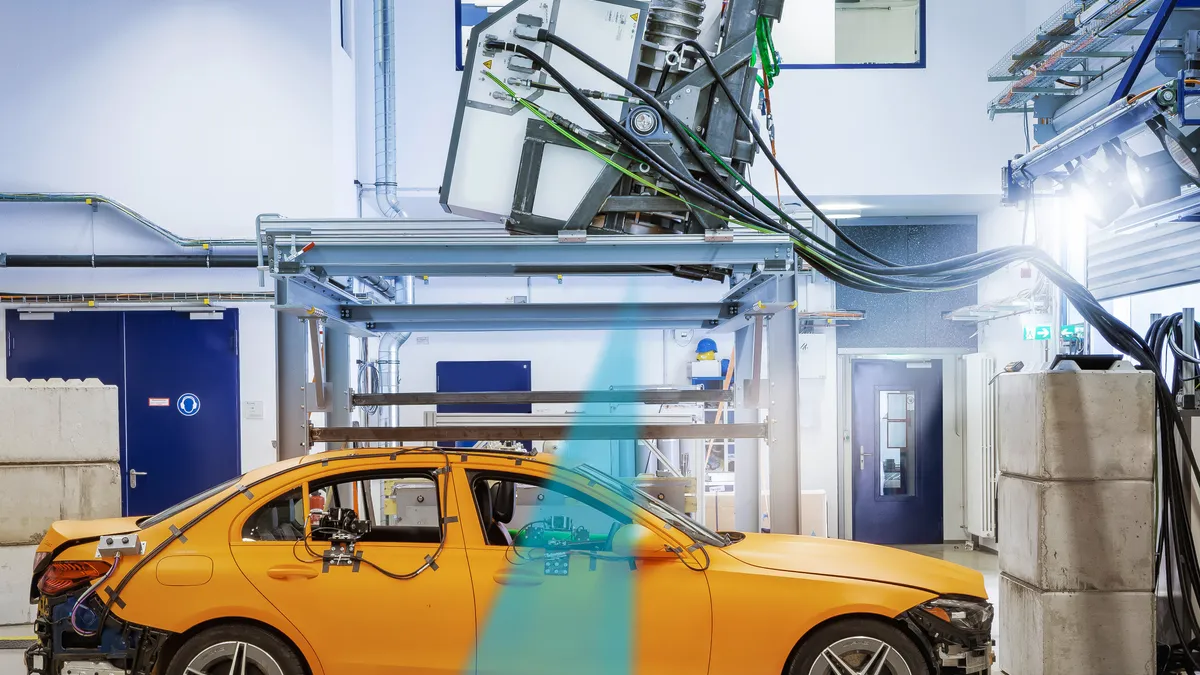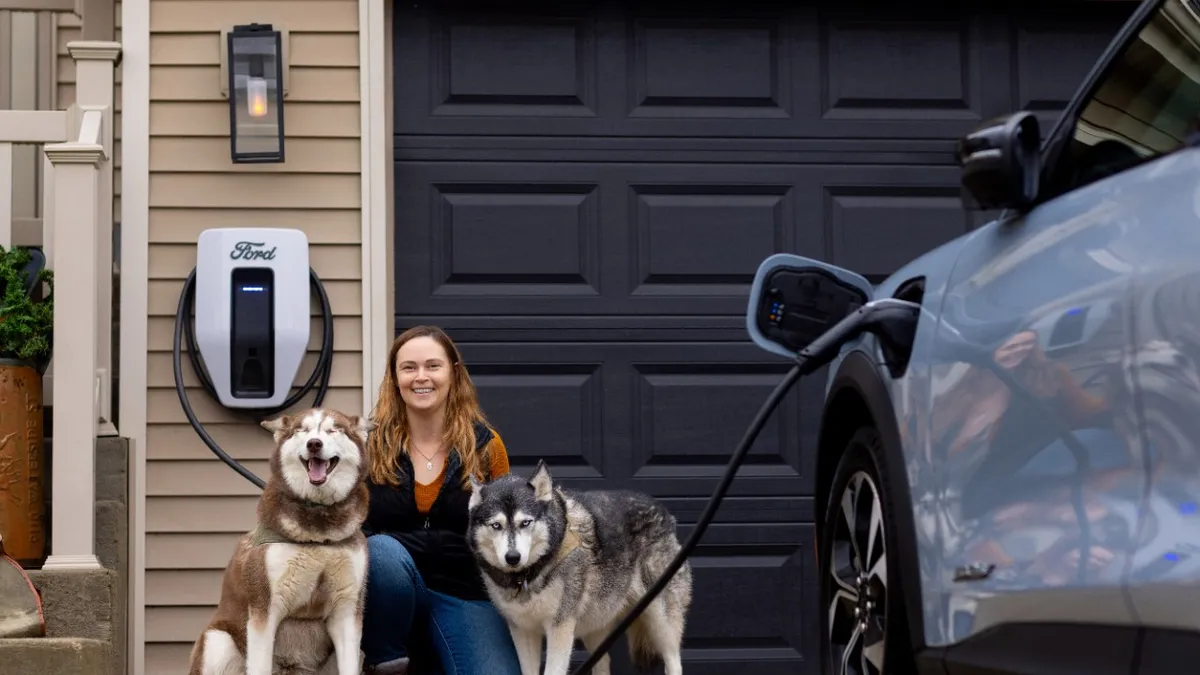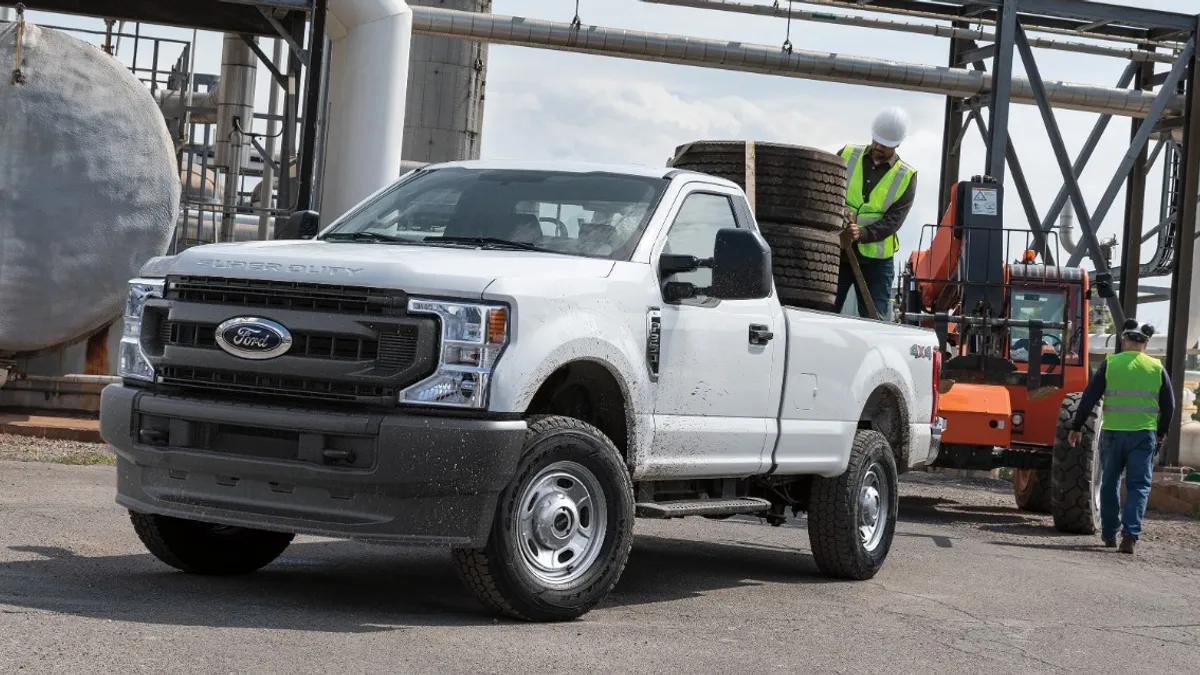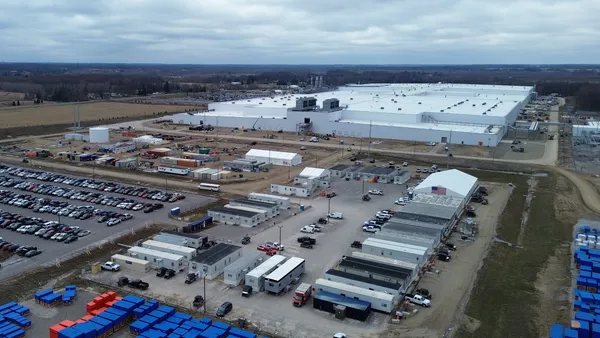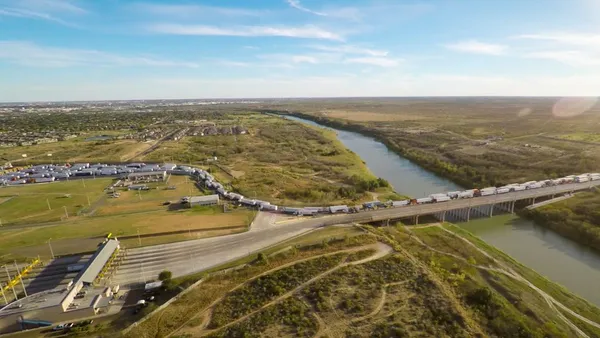Dive Brief:
- Mercedes-Benz has become the first automaker to use high-speed X-ray technology to evaluate how its vehicles perform in a crash test, according to a March press release.
- The technology allows the automaker to capture up to 1,000 high-resolution images per second to analyze how vehicle body structures deform in a crash and protect test dummies more precisely.
- The automaker plans to use the technology to improve vehicle safety now that it’s established proof of concept.
Dive Insight:
Features like crumple zones, airbags and active seat belts have made vehicles safer. However, these systems rely on a vehicle’s body structure to help protect occupants during a crash, which makes it essential for automakers to improve how their vehicles’ bodies deform in a collision.
“The Mercedes-Benz X-ray crash sets a milestone in the development tools of the future,” said Markus Schäfer, Mercedes-Benz’s chief technology officer and a company board member, in the release. “With a direct view into the hidden interior, it can help to draw important conclusions for the further improvement of vehicle safety.”
Mercedes-Benz conducted the 60 km/h (37 mph) crash test in collaboration with the Fraunhofer Institute for High-Speed Dynamics, commonly known as the Ernst Mach Institute, in Germany. Researchers carried out the test with a C-Class sedan, using a more powerful linear accelerator as the radiation source for the X-rays to provide more detail than the conventional X-ray technology used in previous experiments.
During the test, X-ray beams are directed through a vehicle’s body and test dummies from above. A flat detector placed under the vehicle serves as a digital receiver for the X-rays. Each X-ray pulse lasts just a few microseconds, allowing the automaker to capture the deformation process during a crash test without motion blur.



